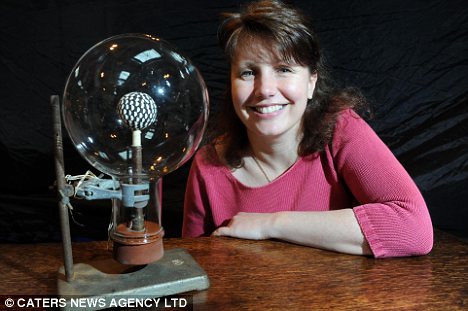| PHYSICS OF SOLAR CELLS |
History

http://rezanderson.mystarband.net/

http://rezanderson.mystarband.net/
The history of solar cells is
extensive, with countless discoveries leading to the advances in solar
cell
technology. Below are a few of the accomplishments.
The introduction of solar cell
technology begins as early as 1839. French physicist, Antione-Cesar
Becquerel, observed the photovoltaic effect while experimenting with a
solid electrode in an electrolyte solution. He noticed a voltage
generated when light fell upon the electrode.
Nearly 50 years later, Charles Fritts, an American inventor, spent endless hours creating the first true solar cell. In an attempt to prove to his friends that sunlight could be converted into electricity. The first true solar cells, using junctions, were formed by coating the selenium semiconductor with an extremely thin, nearly transparent layer of gold. As a result of the properties of selenium, Fritt's cells had a conversion efficiency of only about 1%. The high cost of materials, in addition to its inefficiency prevented the use of such cells for energy supply.
The Fritts' first solar cell is shown below. Which had been purchased at an auction by an auctions dealer, only to be forgotten in a box for 60 years. To much suprise the device still works after being re-discovered. Link to Full Article
World's First Solar Panel

Nearly 50 years later, Charles Fritts, an American inventor, spent endless hours creating the first true solar cell. In an attempt to prove to his friends that sunlight could be converted into electricity. The first true solar cells, using junctions, were formed by coating the selenium semiconductor with an extremely thin, nearly transparent layer of gold. As a result of the properties of selenium, Fritt's cells had a conversion efficiency of only about 1%. The high cost of materials, in addition to its inefficiency prevented the use of such cells for energy supply.
The Fritts' first solar cell is shown below. Which had been purchased at an auction by an auctions dealer, only to be forgotten in a box for 60 years. To much suprise the device still works after being re-discovered. Link to Full Article
World's First Solar Panel

http://www.dailymail.co.uk
In 1905, Albert Einstein published his paper on the photoelectric effect. Einstein described light as a collection of discrete quanta (photons) rather than continuous waves. He theorized that a photon above a threshold frequency had enough energy to eject a single electron, bonded to an atom (the photoelectric effect). Einstein's interpretation of the photoelectric effect won him the Nobel Prize in Physics in 1921.

In 1905, Albert Einstein published his paper on the photoelectric effect. Einstein described light as a collection of discrete quanta (photons) rather than continuous waves. He theorized that a photon above a threshold frequency had enough energy to eject a single electron, bonded to an atom (the photoelectric effect). Einstein's interpretation of the photoelectric effect won him the Nobel Prize in Physics in 1921.
Einstein (1905)

http://jegans.wordpress.com
Pearson, Chapin & Fuller at Bell Laboratories (1954)

http://www.greentechmedia.com
In 1953 Photovoltaic technology is
born in the United States. Gerald
Pearson, an empirical physicist, unintentionally developed a
substantially more efficient photovoltaic cell from silicon as opposed
to the traditional selenium. The following year, Gerald Pearson, Daryl
Chapin, and Calvin Fuller developed the first silicon photovoltaic cell
at Bell Laboratories. The silicon solar cell developed had a 4%
efficiency and later achieved 11% efficiency. The device was the first
solar cell capable of
converting enough of the sun's energy into power to run electrical
equipment.
Pearson, Chapin & Fuller at Bell Laboratories (1954)

http://www.greentechmedia.com
The technical progress of silicon solar cells continued at a fast pace. However, initially the only demand for silicon solar cells was for radio and toy manufacturers to power small devices. As progression of the solar cell continued during the 1950s. NASA began to investigate solar cells to power its ambitious space ventures. In the late 1950s the Vanguard I space satellite used a solar cell to power its radios.
Vanguard I Satellite (1958)
NASA remained skeptic in the success of the PV systems to power its ambitious space ventures. Despite their skepticism, later that year, Explorer III, Vanguard II, and Sputnik-3 were launched with photovoltaic power systems on board. NASA quickly realized the success of the new PV systems. Solar cells quickly became the accepted energy source for space applications and remains so today. The increasing demand for solar cells in space opened an increasingly and relatively large business for those manufacturing solar cells.
Explorer III (1958) Sputnik-3 (1958)


http://commons.wikimedia.org http://www.mentallandscape.com
Since the beginning of applications for solar cells, its potential continues to grow rapidly. With modern dependence of fossil fuels, advancements in the efficiency and capabilities of solar power is becoming an increasingly viable power source.
|
Designed by Elliot Smith
